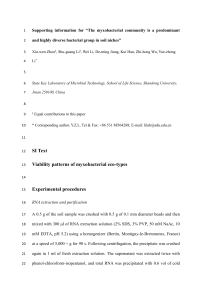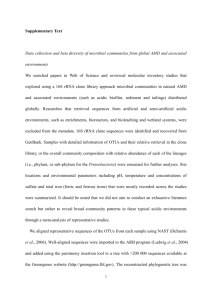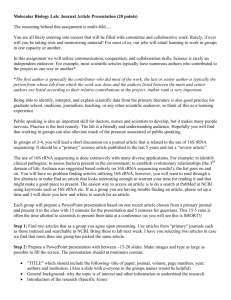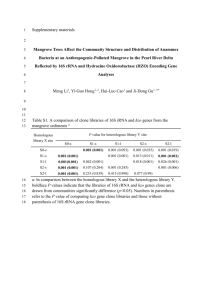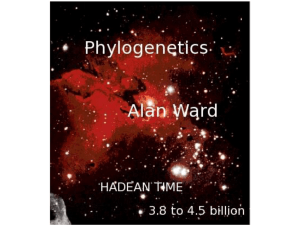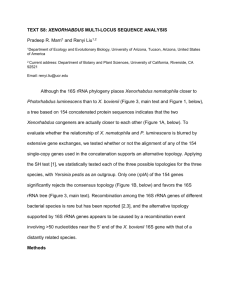A B
advertisement
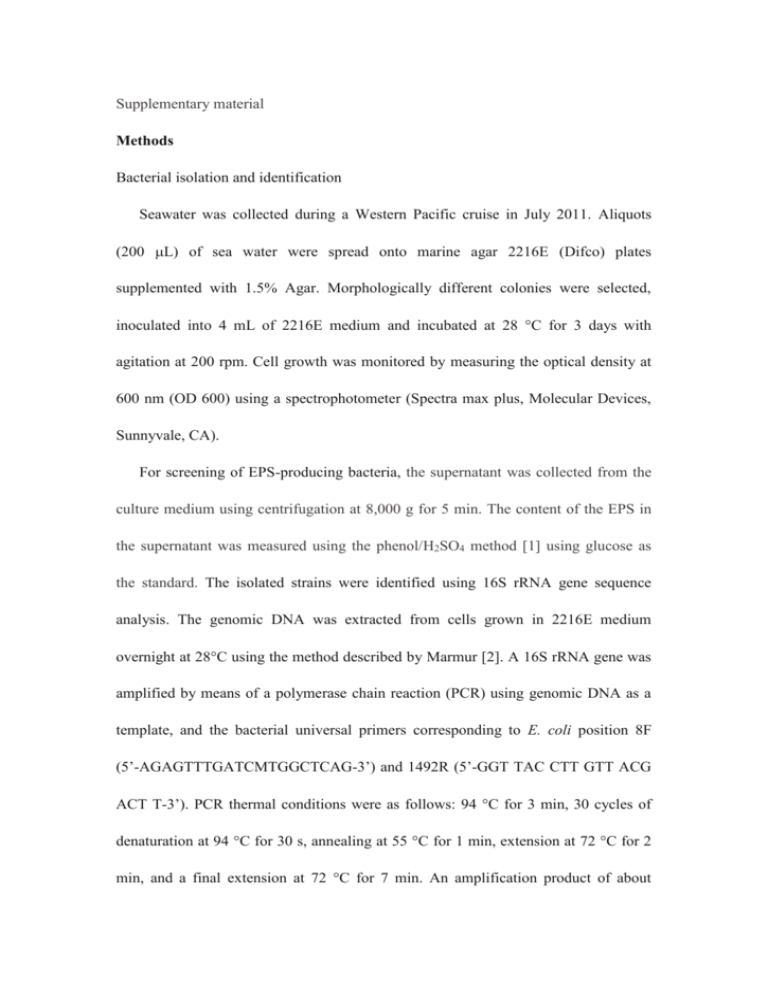
Supplementary material Methods Bacterial isolation and identification Seawater was collected during a Western Pacific cruise in July 2011. Aliquots (200 L) of sea water were spread onto marine agar 2216E (Difco) plates supplemented with 1.5% Agar. Morphologically different colonies were selected, inoculated into 4 mL of 2216E medium and incubated at 28 C for 3 days with agitation at 200 rpm. Cell growth was monitored by measuring the optical density at 600 nm (OD 600) using a spectrophotometer (Spectra max plus, Molecular Devices, Sunnyvale, CA). For screening of EPS-producing bacteria, the supernatant was collected from the culture medium using centrifugation at 8,000 g for 5 min. The content of the EPS in the supernatant was measured using the phenol/H2SO4 method [1] using glucose as the standard. The isolated strains were identified using 16S rRNA gene sequence analysis. The genomic DNA was extracted from cells grown in 2216E medium overnight at 28C using the method described by Marmur [2]. A 16S rRNA gene was amplified by means of a polymerase chain reaction (PCR) using genomic DNA as a template, and the bacterial universal primers corresponding to E. coli position 8F (5’-AGAGTTTGATCMTGGCTCAG-3’) and 1492R (5’-GGT TAC CTT GTT ACG ACT T-3’). PCR thermal conditions were as follows: 94 C for 3 min, 30 cycles of denaturation at 94 C for 30 s, annealing at 55 C for 1 min, extension at 72 C for 2 min, and a final extension at 72 C for 7 min. An amplification product of about 1.5-kb was purified and sequenced. The 16S rRNA gene sequence was compared to the sequences of the most closely related strains in the GenBank database and EzTaxon server 2.1 [3]. For phylogenetic analysis, the 16S rRNA gene sequences of closely related, validly published taxa were retrieved from the GenBank database using BLAST, and aligned using CLUSTAL X (ftp://ftp.ebi.ac.uk/pub/software/clustalw2). A phylogenetic tree was constructed using MEGA 4 [4]. Bootstrap analysis of 1000 replications was performed to assess the confidence limits of the branching. Transmission electron microscopy observations JL2069 cells grown on 2216E solid medium at 28 C for 24 h were used for preparing transmission electron microscopy (TEM) samples. Cells collected from the medium were either directly immersed in 2% phosphotungstic acid (pH 7.0) or rinsed twice with 1mL of 0.85% NaCl before being immersed in 2% phosphotungstic acid. The cells were then loaded onto a copper grid and dried at room temperature. Observations were made under standard conditions with a JEM-1230 (JEOL Ltd. Tokyo, Japan) Figures Fig. 1. Neighbor-joining tree showing the phylogenetic position of strain JL2069 and representatives of other taxa based on 16S rDNA sequences. Bar = 0.01 substitutions per nucleotide position. Bootstrap values expressed as percentages of 1000 replicates greater than 50% are shown at the branch points. Fig. 2. Electron micrograph of negatively stained cells of JL2069. The cells cultured on the 2216E solid medium for 24 h at 28 C were collected and directly stained with 2% phosphotungstic acid (A) or washed three times by 0.85% NaCl before staining (B). Scale bar = 1m. References 1. Dubois M, Gilles KA, Hamilton JK, Rebers P, Smith F (1956) Colorimetric method for determination of sugars and related substances. Anal Chem 28: 350-356 2. Marmur J (1961) A procedure for the isolation of deoxyribonucleic acid from microorganisms. J Mol Biol 3: 208-218 3. Chun J, Lee JH, Jung Y, Kim M, Kim S, et al. (2007) EzTaxon: a web-based tool for the identification of prokaryotes based on 16S ribosomal RNA gene sequences. Int J Syst Evol Microbiol 57: 2259-2261 4. Kumar S, Nei M, Dudley J, Tamura K (2008) MEGA: a biologist-centric software for evolutionary analysis of DNA and protein sequences. Briefings in bioinformatics 9: 299-306
